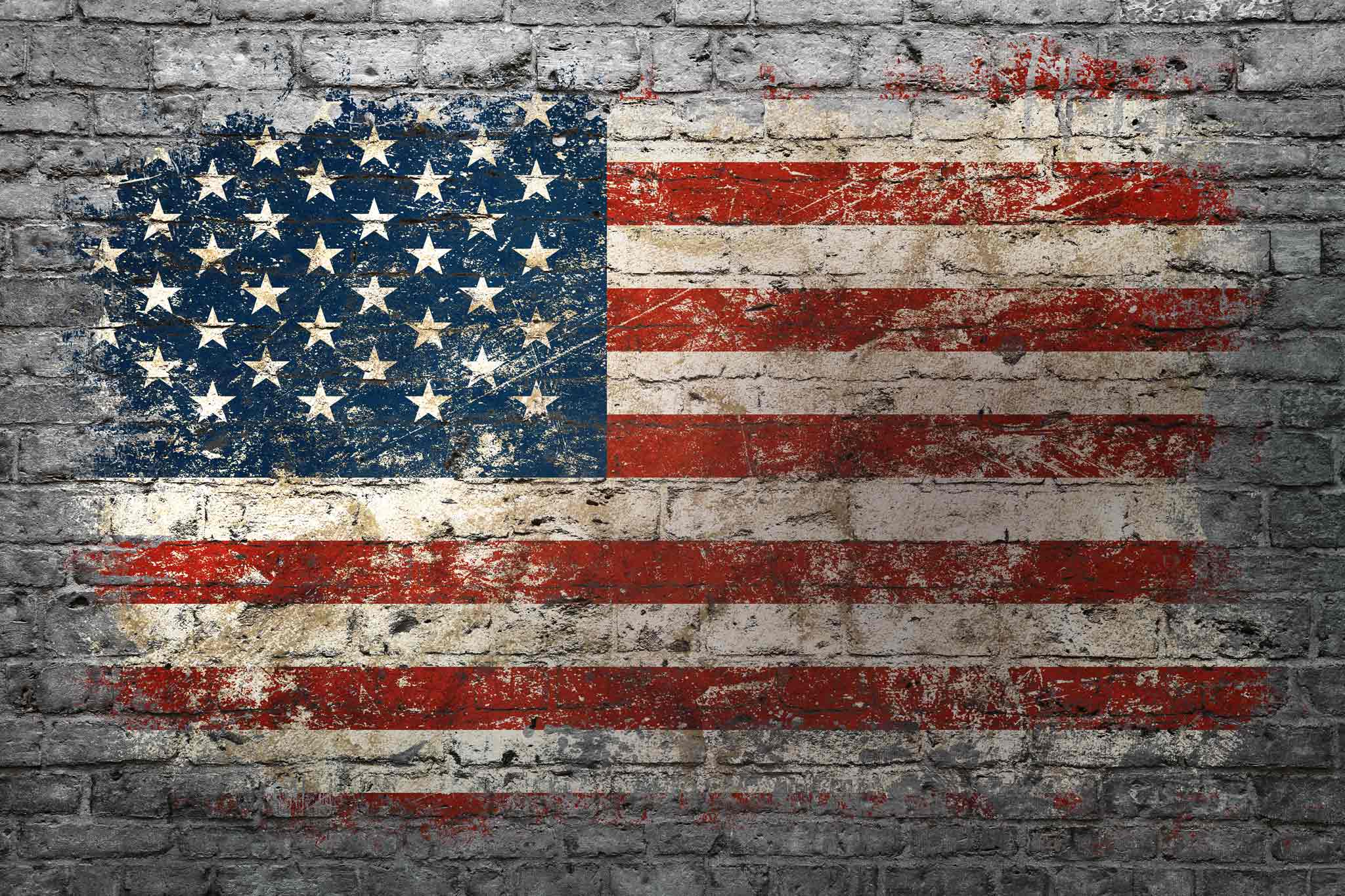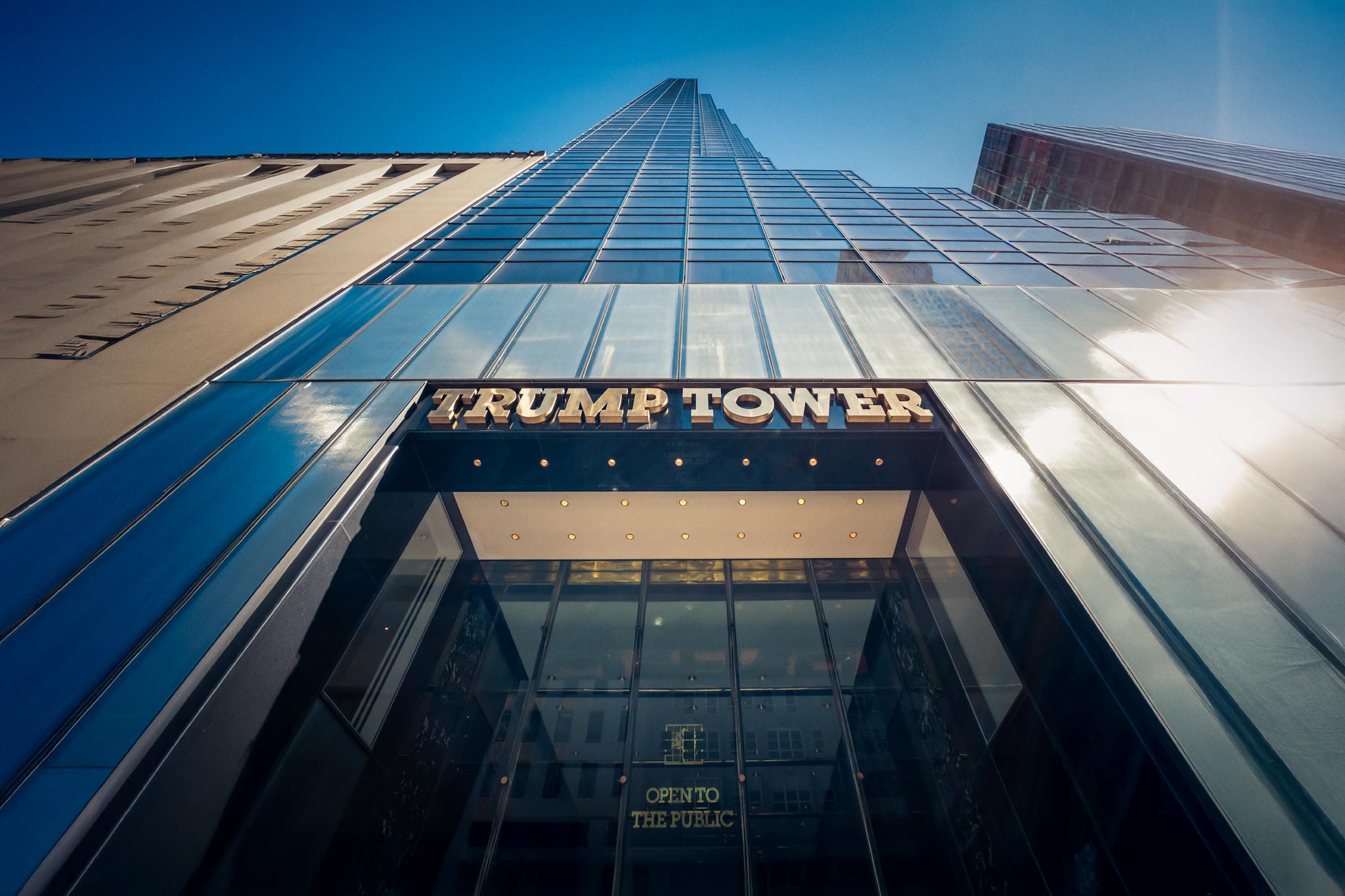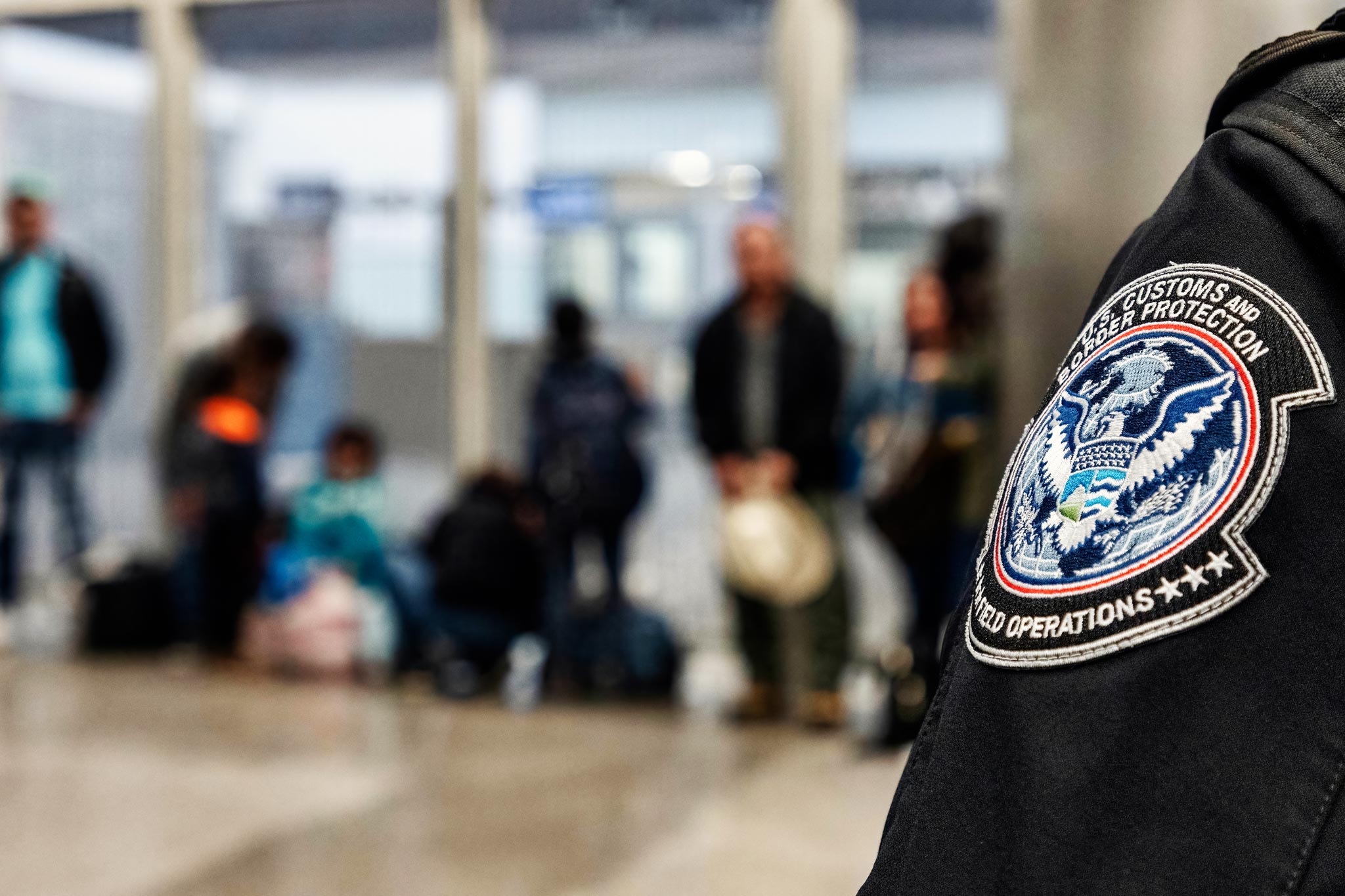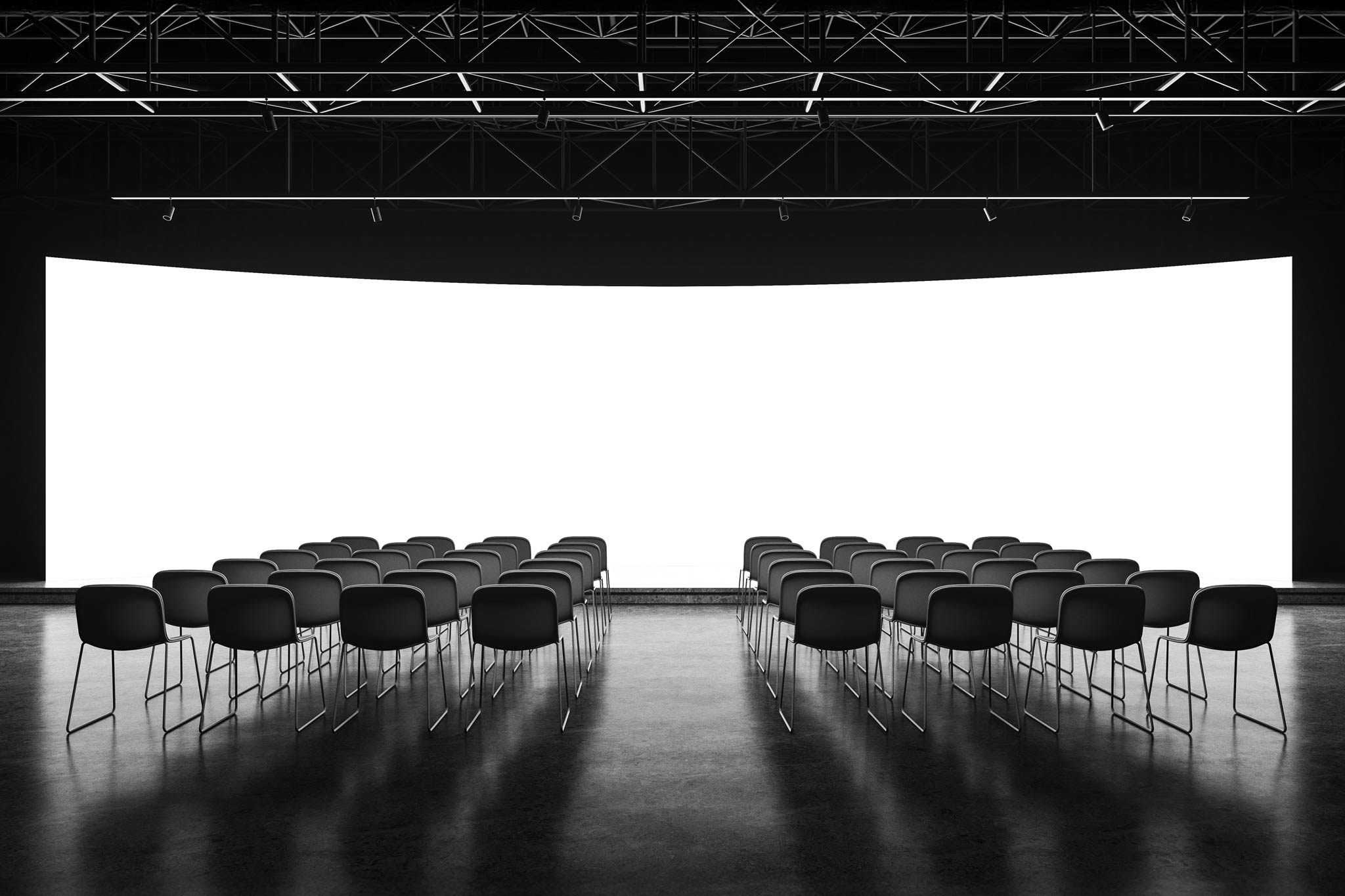In his 1914 poem, Mending Wall,
American poet Robert Frost offered
some sage advice about barriers:
“Before I built a wall I’d ask to know
What I was walling in or walling out,
And to whom I was like to give offense.
Something there is that doesn’t love a wall,
That wants it down”*
In the first few months of the new United States Administration, the US has been in a frenzied wall-building mode, but not the wall Mexico supposedly would pay for eight years ago. When you think about it, everything happening there now is about erecting barriers, some physical and others in a more figurative sense.
There’s a revolution going on in America right now, perhaps best defined as national policy by culture war. Regarding economic and social upheaval, if Covid-19 was an earthquake, it would only be a precursor to the seismic disruption coming out of the US just now, which may have even longer-term consequences. Like in the early days of Covid-19, people in the association, corporate, and meetings worlds are worried and trying to anticipate how the chaos will play out and what it means for their future planning.
First, let’s do a quick review of all of America’s types of wall-building and what the ramifications might be in a broad context. Then, we can explore how the world may change and the implications of that change for associations and meetings.
America is Building a Lot of Different Walls
Trade Barriers America’s trading partners have been whiplashed with on-again, off-again tariffs. The lack of coherence in America’s trade policies is reaping confusion, doubt, retaliation, and general concerns about both near and long-term economic effects.
Likely Impacts: A broad consensus has emerged, including forecasts by the International Monetary Fund (IMF), that the world will likely experience lower growth. Fractured trade will likely result in supply chain disruptions, business dislocation, higher consumer costs and lower investor confidence. That has obvious ramifications for associations and meetings, and the sharp end of that stick is all financial.
Isolationist Fencing America is returning to historically familiar practices of disengagement, detachment and “lonerism.” The last two periods required world wars to pull America back from its self-imposed isolation. Both wars ended with the formation of global peace and security organisations, first the League of Nations and later the United Nations, for which US future support is in question. Having the US reduce its commitments to security arrangements like the UN and Nato could potentially have far-reaching repercussions. US foreign policy is now clearly in the hands of neophytes, and their collective approach is naïve, transactional and unsophisticated. This time, no one is around to constrain a commander-in-chief whose perspective of the world is simply that of a real estate developer.
Likely Impacts: Europe’s most critical issue is Russia and the Ukraine. The US has neither the character nor the aptitude to help broker a resolution. The war is likely to be protracted. The outcome will probably be more favourable for Ukraine if the US can get enough minerals, or more agreeable for Russia if better real estate exists. While the populations of Gaza and Israel are demonstrating for peace, they are both politically dominated by unpopular and intransigent antagonists. It seems that the US can’t care less about Africa, as it cuts aid and watches idly as children die. Of course, the biggest story is China and we’ll come to that later.
“No one is around to constrain a commander-in-chief whose perspective of the world is simply that of a real estate developer”
Border Walls Despite the lack of brick-and-mortar, border clearance is a physical barrier. People have to get past the security personnel and through the turnstiles. There are lengthy delays in visa clearances. Newly-imposed entry restrictions are blocking travellers from certain countries. Tales of denied entry, lengthy interrogations, and even detention are creating an atmosphere of fear and uncertainty, adding to the effects of this barrier.
Likely Impacts: Canadian companies are restricting travel to America, while France and the UK have joined Canada in issuing travel advisories. Arrivals tracking shows that numbers from some European countries to the US are down 30 per cent. Travel polls suggest significant further reductions in trans-Atlantic travel. Research firm Tourism Economics has changed its forecast from an 8.8 per cent growth to a 9.4 per cent decline in international visitor arrivals to the US for 2025.
Blocking Research and Science Many of America’s leading scientific institutions are being effectively gutted. The National Institute for Health, Center for Disease Control, National Science Foundation, National Oceanic and Atmospheric Administration, the US Geological Survey, etcetera, are all losing experienced personnel, funding, and the autonomy to study or monitor issues that don’t align with the Administration’s priorities.
Likely Impacts: For health, there will be setbacks in early prevention, treatment, and pandemic preparedness. For science, there will be reduced discovery and innovation. The reduction in American institutional capacity will generally affect research, and lead to a reduced ability to address global challenges. America will likely experience a brain drain. It is already being reported that research scientists are seeking opportunities in places like Europe, Canada and Australia.
Confining Intellectual Freedom An administration of a political party that was always obsessed with reducing government incursions into people’s lives is now deciding what books people can read. Books that government censors perceive to be too “woke” or to promote concepts like Diversity, Equity, and Inclusion (DEI) are being removed from bookshelves. Tellingly, at West Point, America’s military academy, books that address themes of race and racism are disappearing, while Mein Kampf is still on the shelves. Other banned themes include books on gender issues, climate change, and potentially many different topics that do not align with current government philosophies.
Likely Impacts: Reduced exposure to diverse viewpoints, cultures and historical contexts. Negative impact on critical thinking and informed citizenship.
“There’s a revolution going on in America right now, perhaps best defined as national policy by culture war”
Restraining Academia Members of the conservative community see universities as promoters of leftist ideology. So, naturally, the US Government’s response is to purge any semblance of that ideology and supplant it with rightist ideology. Walling in rightist thinking and walling out leftist thinking is again an attempted form of control that is exercised by restricting government funding to universities that don’t comply with imposed guidelines. Recently, America’s richest university, Harvard, refused to comply and is now threatened with losing over €1.78 billion in research grants and cancelling its non-profit status.
Likely Impacts: Harvard is a good case study. Its alums, faculty and researchers have been awarded more Nobel Prizes than any other university in the world. So, if Harvard is diminished, there will be less research by PhD’s and fewer new discoveries. That effect would be multiplied across a nation with over 30 per cent of the world’s top 100 ranked universities.
Closing Gates on Civil Liberties and Due Process The Administration’s actions in deporting US legal residents to foreign prisons without due process, and its subsequent refusal to obey court orders to return them, is heightening fears of a constitutional crisis. Fundamental principles of the rule of law and America’s constitutional system are being sorely tested. In addition, in an assault on DEI, the government is pressuring companies with government funding or contracts to remove DEI from their operations and programmes.
Likely Impacts: If the US Administration’s efforts to subvert the courts’ authority were successful, there would be enormous scope for damage to civil liberties, social order and stability.
“US foreign policy is now clearly in the hands of neophytes, and their collective approach is naïve, transactional and unsophisticated”
If it’s America vs China, Don’t Underestimate China
It’s hard to argue with 1.4 billion people living in the world’s second-biggest economy. China’s prosperity is both an inspiration and a perceived challenge in various parts of the world, especially in the West. However, in many ways, it could be reasonably argued that America’s current policies threaten Western stability, values, and interests more than China’s. Plus, an economic downturn in China would have negative effects across the entire globe.
China is at the centre of another of the American government’s current wall-building exercises. This wall is called the containment policy.
So, the US is now waging an unprecedented trade war with China. Anyone who thinks China is going to lose this trade war doesn’t have a scintilla of understanding of China’s recent history, economic strength, dexterity, politics, and culture. Unfortunately for all of us, that would include everyone in the inner circle at the White House overseeing foreign and trade policy.
It’s hard to imagine that China, the world’s largest creditor nation, will lose a trade war with the US, the world’s largest debtor nation. Already, China has a commanding position in global trade, and Bloomberg’s modelling shows that, as constituted today, the tariffs will only add to the lead; pushing many more countries to work more with China and less with America.
In a guest essay for the New York Times, Moira Weigel, an assistant professor at Harvard, wrote that in China, one of the many nicknames for the President of the US is “Chuan Jianguo”, which translates as “Trump the nation builder.” The inherent joke is that the nation is being built in China.
It’s telling that China graduates more doctors, scientists, and engineers each year than America and Europe combined. Twenty-five years ago, eight out of ten countries conducted more trade with the United States than with China. Today, seven out of ten have China as their largest trade partner.
Here are a few additional facts about what’s happening in China from an article by David Wallace Wells, writing in the Economist:
- China is now routinely installing as much solar power as the rest of the world combined while producing 90 per cent of the world’s solar panels and more than three-quarters of its electric batteries.
- China controls over 90 per cent of the world’s supply of rare-earth metals, essential ingredients in things like smartphones, semiconductors, computer screens and the magnets that power our electric vehicles.
- On an annual basis, China surpasses the US in new patents and spending on university and government research.
- China is the second largest developer of new drugs, and between 2013–2023, its share of global clinical trials grew from four per cent to 28 per cent.
- China produces more scientific papers than Europe or the US and is doing 60 per cent of cutting-edge research in materials science, engineering, chemistry, and computer science.
“Associations will avoid destinations, like the US, that demonstrate prejudicial border clearance treatment of people from the Muslim world or other countries”
What does the future hold?
Forecasting is risky business. Of course, anyone can guess the future, and they will eventually either be proven right or wrong. The running joke is therefore that all probabilities are 50 per cent – either something will happen or it won’t.
A way to improve “future thinking” is scenario forecasting. That involves making predictions based on which of various possible scenarios will occur. The trick is identifying likely tipping points or triggers that tell you a given scenario is about to happen. The following scenarios will largely determine whether the dysfunction continues, or if America and the world gradually return to stability.
Here are future scenarios that will have a dramatic impact on the issue of dysfunction versus stability:
Scenario 1: Judicial intervention US lower courts are willing to restrain or at least slow the Administration’s actions, though the Supreme Court has prevaricated. Lower courts will likely continue to slow things, but ultimately, stability will require meaningful intervention by the high court. A cautionary note here is that judicial efforts to constrain the Administration would require enforcement, which the courts have no power to effect. And the Republican-controlled Congress is actively avoiding confrontation with the White House. However, barring a full-grown constitutional crisis, the Supreme Court begins to push back, or the Administration will be relatively free to do as it pleases.
Scenario 2: Congressional control The midterm elections in November of 2026 will greatly affect the question of stability or extended dysfunction. History shows a likelihood that at least one of the houses of Congress will shift to the Democrats after the mid-terms. Given unfavourable poll results for the Administration, the Democrats may regain control of both houses. Continued Republican control of both houses means more of the same for the ensuing two years. A divided Congress means the Administration’s goals will be stymied. A Democratic Congress would likely mean that the legislative branch would shift the balance of power back to Congress and the courts, and effectively begin an active march back to stability.
Scenario 3: Trump loses the trade war with China and declares victory I chose that wording because of the high likelihood that this is what is going to happen. As discussed, there is no reason to believe China will lose the trade war. There is reason to believe that China and the US will, sooner rather than later, actually conclude a new trade agreement. That is essential to the economic health of both countries and the world economy. However, Trump effectively lost in that case because he aimed far higher than a reasonable new trade relationship. His will be a hollow “victory,” given all the chaos resulting from confrontation rather than negotiation. And the negative reverberations of the exercise will take time to percolate out of the world’s economic system. So, the answer here is likely to be stability but over time, with lingering economic health complications over the next few years.
Scenario 4: The White House responds to market turmoil Though the Administration has, so far, shown a cavalier attitude toward the adverse market effects of its policies, the bravado could end as conditions worsen and approval ratings keep falling even lower. Then again, the current occupant of the White House has shown limitless reserves of bravado in the past and, some might argue, has no real grip on reality. Again, the dysfunction will compound if the Administration persists in its current direction. And even if it does go into course correction, benefits may take a long time to materialise.
What all of this means is that the damage has already been done. The question will be how much the damage is exacerbated and then, ultimately, how long it lasts.
“The assault on scientific institutions will mean fewer science-related conventions coming to the US”
What are the implications for associations and meetings?
Indeed, any broad global impacts arising from US wall building will impact associations and meetings in the US and all other parts of the world. Here are some of the likely challenges that associations and business event planners will face for the foreseeable future:
Associations losing members In a weakened economy, individuals and companies will cut costs in various ways, including reduced investment in association membership.
Lower attendance numbers In the US, government employees are being restricted from participating in meetings. Numerous factors point to reduced participation levels both in the US and globally. Rising costs deter people in normal times, and that effect is heightened in a worsening economy. In addition, people whose travel to meetings is corporate sponsored will lose travel authorisation from their employers.
Reduced meeting revenues Uncertain trade policy will drive uncertainty in supply chains and distribution channels, leading to higher prices and a softening consumer market. That affects profits, which means tighter budgets, lower sponsorship levels, and fewer exhibitors.
Higher meeting costs It would be practical for associations and meeting planners to assume that there will be higher staging costs for meetings. Tariffs and rising costs, in the US and globally, will likely increase logistics, material and services costs. It will translate into higher meeting costs and, ultimately, higher costs for the delegates who attend.
“China is now routinely installing as much solar power as the rest of the world combined”
Fewer and smaller meetings US Government agencies are being directed to cancel meetings, which will have a measurable effect there. Economic factors, including lower attendance, higher costs, and reduced revenues, will likely result in a downward trend in the size and number of meetings.
International meetings are shifting away from the US The assault on scientific institutions will mean fewer science-related conventions coming to the US. BTN Europe reports that up to twenty per cent of travel buyers are considering cancelling, moving, or not attending meetings and events in the US, while ten per cent are considering cancelling employees’ attendance at US-based events.
Then there’s the issue of border clearance A helpful analogy is that many associations have avoided holding meetings in countries that have visa bans on Israeli citizens in the past. Naturally, associations will also avoid destinations, like the US, that demonstrate prejudicial border clearance treatment of people from the Muslim world or other countries where they have members. America’s border enforcement practices about foreign arrivals have always been problematic. But the welcome sign for many people has now been totally removed.
Regarding international meetings, if you are an association leader, meeting planner or destination promoter from outside the US, your prospects could be a bit brighter in one way. Many Americans remain eager to collaborate. Canada and Mexico are still neutral, welcoming places for associations seeking partnerships and engagement in North America. Other countries will also likely benefit from the relocation of international meetings that won’t now be going to America.
*The poem “Mending Wall” is set in rural New England, where Robert Frost lived at the time, and takes its impetus from the rhythms and rituals of life there. The poem describes how the speaker and a neighbour meet to rebuild a stone wall between their properties, and a ritual is repeated every spring. This ritual raises essential questions throughout the poem as the speaker considers the purpose of borders between people and the value of human work.










